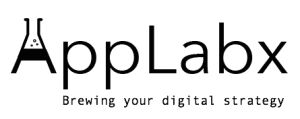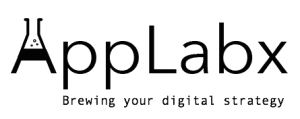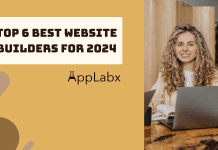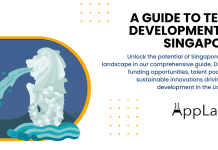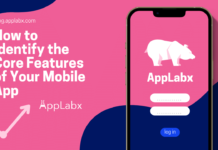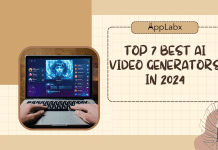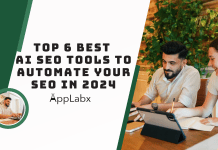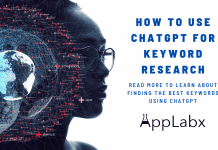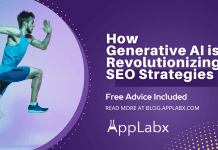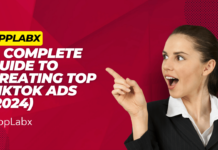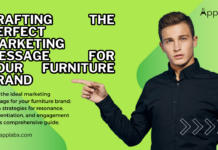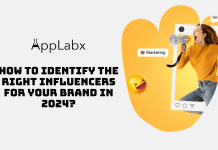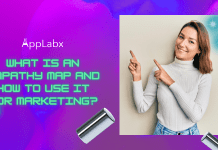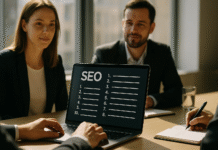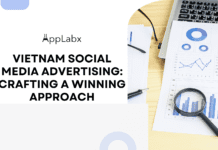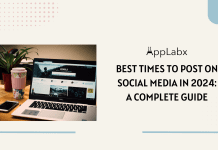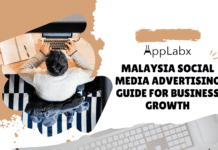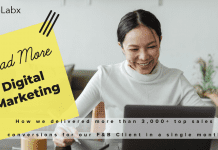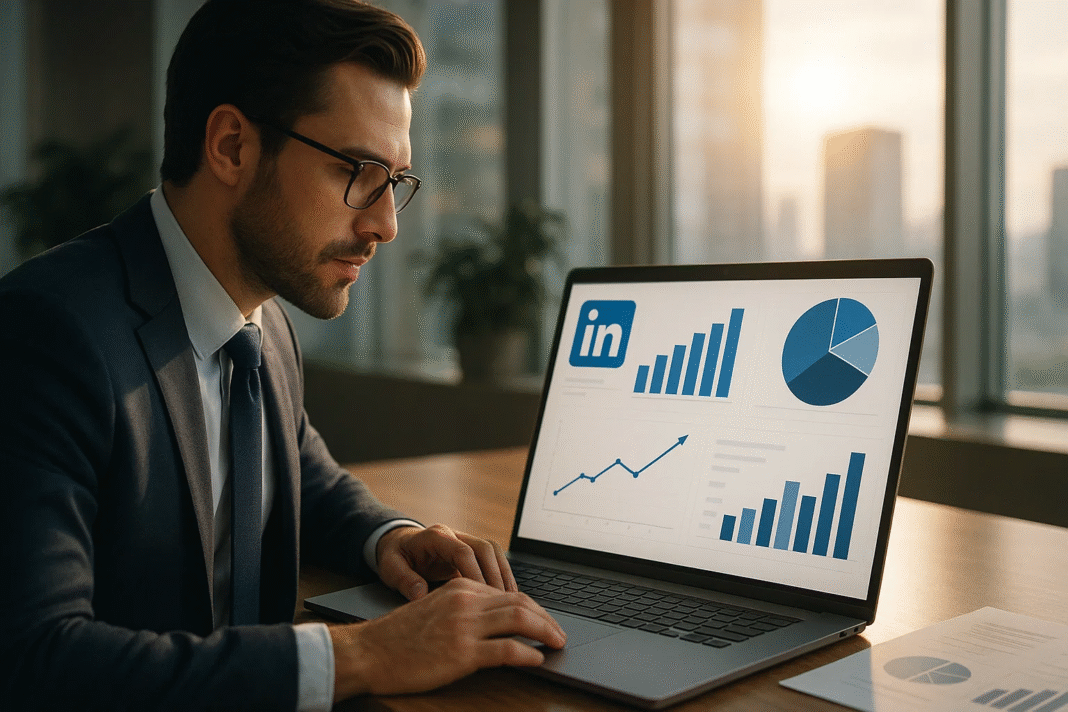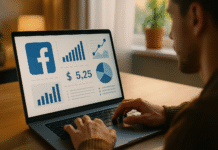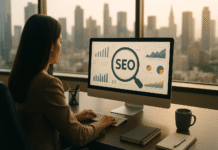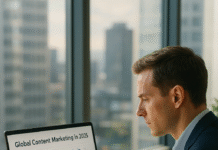Key Takeaways
- LinkedIn Ads in 2025 deliver unmatched ROI, with a 113% ROAS, making them the most powerful B2B advertising channel for revenue growth.
- AI-driven tools like LinkedIn Accelerate and Conversions API are redefining campaign optimization by linking ad spend to real business outcomes.
- Success on LinkedIn now requires full-funnel strategies, authentic storytelling, and consistent retargeting to influence the long B2B sales cycle.
The landscape of LinkedIn advertising in 2025 is experiencing one of the most transformative shifts in its history, positioning itself as the gold standard for B2B marketing worldwide. Once viewed as a niche platform for recruitment and professional networking, LinkedIn has now become the dominant force for driving revenue, building brand authority, and connecting businesses with high-value decision-makers. Its role has expanded far beyond lead generation to become a full-funnel, data-driven engine for growth that supports long-term brand strategy and measurable business outcomes. For marketers, executives, and growth strategists, understanding the state of LinkedIn Ads in 2025 is not just an option — it is a necessity for staying competitive in the global B2B economy.
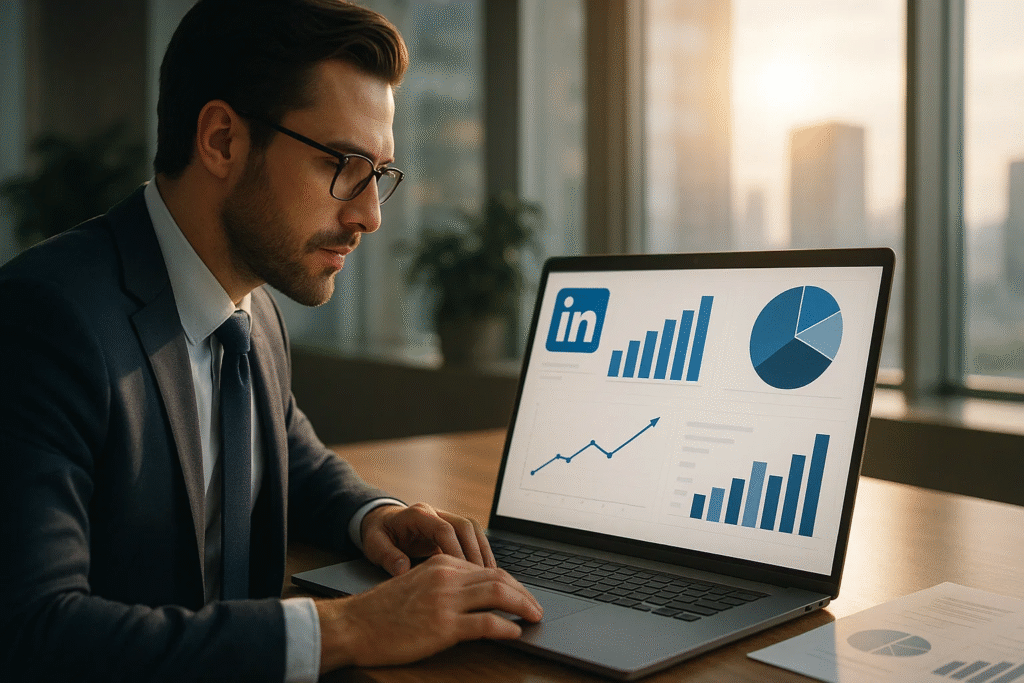
At the heart of LinkedIn’s evolution lies its unmatched targeting precision and powerful AI-driven capabilities. In 2025, advertisers have access to sophisticated tools like LinkedIn Accelerate, the Conversions API (CAPI), and predictive audience modeling that allow campaigns to optimize for real revenue outcomes rather than surface-level engagement metrics. This transformation means that brands can now connect campaign data directly to pipeline performance, proving ROI with unprecedented accuracy. While CPC and CPM remain higher than other social platforms, the superior return on ad spend (ROAS) of 113% reinforces why businesses continue to prioritize LinkedIn as a key advertising channel.
Another major shift is the redefinition of creative excellence. LinkedIn’s algorithm has evolved to reward authenticity, storytelling, and thought leadership. Content that drives deeper engagement — such as multi-image carousels, short-form videos, and employee-generated posts — consistently outperforms generic corporate ads. This signals a new era where brands must humanize their messaging, build trust, and provide actionable value to their audience. CEOs, founders, and industry experts are becoming the face of campaigns, and thought leadership ads have demonstrated 2.3x higher click-through rates compared to traditional creative formats.
Marketers must also adapt to the extended nature of the B2B buyer journey, with an average of 211 days from first ad impression to conversion and 320 days to revenue realization. This requires a robust, full-funnel strategy that integrates awareness campaigns, nurture sequences, and retargeting. Businesses that rely solely on direct-response tactics risk missing the long-term benefits of brand building, relationship nurturing, and sustained engagement.
Finally, 2025 is the year that AI-powered automation truly takes center stage. From bidding strategies that dynamically adjust to market conditions, to campaign recommendations based on historical performance, LinkedIn is enabling advertisers to achieve both scale and efficiency. This democratization of performance optimization allows even smaller teams to compete with enterprise-level advertisers, leveling the playing field.
This strategic report on the state of LinkedIn Ads Advertising in 2025 explores these trends in detail — from costs and benchmarks to creative strategy, algorithm updates, and best practices for maximizing return on investment. Readers will gain a comprehensive understanding of how to design campaigns that align with LinkedIn’s evolving ecosystem, harness AI-driven targeting, and craft content that resonates with the professional audience of today. For B2B marketers looking to future-proof their advertising strategy, this analysis offers actionable insights that can be immediately applied to achieve measurable growth.
But, before we venture further, we like to share who we are and what we do.
About AppLabx
From developing a solid marketing plan to creating compelling content, optimizing for search engines, leveraging social media, and utilizing paid advertising, AppLabx offers a comprehensive suite of digital marketing services designed to drive growth and profitability for your business.
At AppLabx, we understand that no two businesses are alike. That’s why we take a personalized approach to every project, working closely with our clients to understand their unique needs and goals, and developing customized strategies to help them achieve success.
If you need a digital consultation, then send in an inquiry here.
Or, send an email to [email protected] to get started.
The State of LinkedIn Ads Advertising in 2025: A Strategic Report
- Executive Summary
- The LinkedIn Ecosystem: Scale, Demographics, and Financial Dominance
- The B2B Value Proposition: From Cost to ROI
- Ad Performance Benchmarks & Cost Breakdown in 2025
- Strategic Trends & Innovations for 2025: The AI-Driven Future
- A Strategic Blueprint for Success in 2025
1. Executive Summary
The state of LinkedIn advertising in 2025 presents a fascinating duality—while often perceived as a more premium and expensive advertising channel compared to its competitors, data-driven insights reveal that LinkedIn consistently delivers superior outcomes for business-to-business (B2B) marketers. This paradox is central to understanding LinkedIn’s strategic importance in the global advertising ecosystem. The higher cost per click (CPC) and cost per 1,000 impressions (CPM) are not merely expenses; they represent an intentional investment in reaching a uniquely valuable audience of decision-makers, executives, and influencers. When measured through key performance indicators such as cost per acquisition (CPA) and return on ad spend (ROAS), LinkedIn emerges as a platform that not only justifies but magnifies its premium pricing by driving more meaningful business outcomes.
LinkedIn’s Market Scale and Audience Power
LinkedIn’s growth trajectory in 2025 is unprecedented, positioning it as the most influential B2B network in the world. With more than 1.1 billion members globally and an average annual net gain of approximately 70 million users, the platform commands a network of professionals with extraordinary purchasing authority. This dominance has led advertisers to increase their budget allocation significantly. The share of B2B ad spend devoted to LinkedIn has risen from 31% to 39%, making it the leading single-channel advertising platform—surpassing even industry giants such as Google Search and YouTube.
| Metric | Google Search | Meta (Facebook & Instagram) | |
|---|---|---|---|
| Global User Base (2025) | 1.1B+ | 4.3B+ | 3.0B+ |
| Avg. Annual User Growth | 70M | 55M | 45M |
| Avg. B2B Ad Budget Allocation | 39% | 31% | 18% |
| Avg. ROAS | 113% | 78% | 29% |
The above matrix highlights LinkedIn’s dominance not only in audience quality but also in ROI metrics, reinforcing its role as the premier channel for serious B2B advertisers.
AI-Driven Transformation of LinkedIn Ads
A defining feature of 2025 is LinkedIn’s deep integration of artificial intelligence into its advertising ecosystem. New AI-powered solutions, such as LinkedIn Accelerate, have optimized cost efficiency, reducing cost per action (CPA) by as much as 42%. Furthermore, the widespread adoption of Conversions API (CAPI)—now deployed by over 75% of leading B2B advertisers—has resulted in a 20% decrease in acquisition costs and a 31% improvement in conversion attribution.
| AI-Driven Innovation | Impact on Performance |
|---|---|
| LinkedIn Accelerate | ↓ CPA by up to 42% |
| Conversions API (CAPI) | ↓ CPA by 20%, ↑ Conversions by 31% |
| Algorithmic Content Rewards | ↑ Engagement for multi-image (6.60%) and video posts (5.60%) |
AI has also reshaped content distribution dynamics, rewarding authenticity, thought leadership, and interactive formats. Video content, in particular, has emerged as a powerful driver of engagement, with video views increasing by 36% year-over-year—solidifying its role as a key storytelling format for B2B brands.
The Strategic Role in Long B2B Sales Cycles
Unlike short-cycle, conversion-driven platforms, LinkedIn thrives in the complex, multi-touch B2B buying journey. The average customer journey on LinkedIn spans 211 days, with revenue attribution extending as far as 320 days from the first ad impression. This data confirms LinkedIn’s function as a brand-building and lead-nurturing engine rather than a short-term performance channel.
| Metric | LinkedIn Average |
|---|---|
| Avg. B2B Customer Journey Duration | 211 days |
| Avg. Impression-to-Revenue Conversion | 320 days |
| Key Funnel Role | Brand Nurturing & Long-Term Conversion |
By remaining present throughout the decision-making process, LinkedIn enables brands to stay top-of-mind, build credibility, and exert influence over multiple stakeholders until a purchase decision is reached.
Strategic Implications for Marketers
For advertisers seeking to dominate B2B markets in 2025, LinkedIn should not be viewed as a cost center but as a strategic growth platform. Its premium pricing reflects its unparalleled ability to connect brands with high-value audiences at scale, drive measurable ROI, and support the entire marketing funnel—from awareness to conversion.
2. The LinkedIn Ecosystem: Scale, Demographics, and Financial Dominance
a. The Audience: Professionals with Unparalleled Purchasing Power
In 2025, LinkedIn stands as the undisputed nexus of professional networking, with its value proposition rooted in both scale and quality. The platform has now crossed 1.1 billion members worldwide, spanning more than 200 countries and regions, reinforcing its position as an indispensable channel for global B2B marketing initiatives. Its momentum shows no signs of slowing, with an estimated 70 million new members joining annually, or roughly one new professional every three seconds. This remarkable pace of growth positions LinkedIn as a dynamic, ever-expanding marketplace of professional opportunities.
| Metric | 2025 Figures | Strategic Implication |
|---|---|---|
| Total Global Members | 1.1B+ | Largest professional network worldwide |
| Countries & Regions Covered | 200+ | Truly global B2B reach |
| Annual New Member Growth | 70M | Expanding addressable market |
| New Members Per Second | 1 every 3 seconds | Continuous user acquisition |
This global scale transforms LinkedIn into a mission-critical platform for brands seeking to influence decision-makers and build trust with professional audiences across multiple regions and industries.
Audience Quality and Purchasing Power
The strength of LinkedIn lies not only in its numbers but in the composition of its audience. The platform hosts more than 120 million senior-level influencers and over 100 million decision-makers, a dramatic increase from a decade ago, reflecting its evolution from a networking platform to a true decision-making hub.
| Audience Segment | 2025 Figures | Strategic Relevance |
|---|---|---|
| Senior-Level Influencers | 120M+ | Thought leaders shaping industry trends |
| Key Decision-Makers | 100M+ | Direct access to budget holders |
| U.S. Users Earning $100k+ | 54% | High-income professionals with double the buying power of average online users |
This affluent demographic represents an audience with significant discretionary spending ability, making LinkedIn ads especially effective for high-value B2B offerings such as SaaS solutions, enterprise services, and professional training programs. The purchasing power of LinkedIn users is nearly twice that of the average internet user, justifying the platform’s premium cost-per-click and cost-per-impression rates.
A Marketplace of Active Professional Intent
Unlike entertainment-driven social networks, LinkedIn thrives as an active ecosystem of professional intent where career growth, business development, and industry knowledge exchange are the primary drivers of engagement. The platform processes 140 job applications every second and facilitates six hires per minute, underscoring its central role in talent acquisition and business expansion.
| Engagement Indicator | 2025 Data |
|---|---|
| Job Applications per Second | 140 |
| Hires Facilitated per Minute | 6 |
| Content Engagement Context | Career advancement, business growth, knowledge-sharing |
This unique environment creates a contextual alignment for advertisers, where users are naturally receptive to business-related content, thought leadership, and brand messaging. In effect, LinkedIn offers not merely impressions but high-intent interactions, maximizing the probability of conversion over extended B2B sales cycles.
Strategic Justification for Premium Ad Costs
The higher cost structure of LinkedIn advertising—often cited as a barrier to entry—becomes strategically justifiable when examined through the lens of audience intent, quality, and long-term business outcomes. The return on ad spend (ROAS) achieved on LinkedIn consistently outperforms other platforms due to the elevated relevance of the audience and the professional context in which ads are consumed. Brands that leverage LinkedIn’s advanced targeting capabilities, combined with AI-powered ad optimizations, are rewarded with lower cost per acquisition (CPA) and more qualified leads across the sales funnel.
3. The B2B Value Proposition: From Cost to ROI
a. The ROAS Reality: Why Higher Cost Per Click Delivers Higher ROI
One of the most frequent objections marketers raise about LinkedIn advertising in 2025 is its relatively high cost per click (CPC). Industry benchmarks place LinkedIn’s average global CPC at $5.58, with some ranges reported between $2.00 and $3.00 depending on the campaign objective and industry vertical. When compared to platforms such as Facebook or Google Ads—where CPC typically falls between $0.26 and $0.50—LinkedIn’s price point appears steep at first glance.
However, this premium pricing is a deliberate feature, not a flaw. Advertisers are not simply purchasing clicks—they are purchasing precision access to senior decision-makers, C-suite executives, and budget owners who hold significant purchasing authority. This makes LinkedIn a curated environment for high-value lead acquisition, ensuring that every click has a disproportionately higher potential to convert into revenue.
| Platform | Average CPC (2025) | Primary Audience Profile | Strategic Implication |
|---|---|---|---|
| $5.58 (avg.) | Senior decision-makers, executives | Premium leads with high LTV potential | |
| Google Search Ads | $0.50 (avg.) | Mixed-intent searchers | Broad but less qualified reach |
| Meta Ads | $0.26 (avg.) | General consumers, wide targeting | Cost-effective, low-intent clicks |
From Cost to Conversion: Why Higher CPC Yields Better ROI
Evaluating LinkedIn purely on CPC metrics overlooks the true measure of advertising performance: Return on Ad Spend (ROAS). According to 2025 performance data, LinkedIn delivers an average ROAS of 113%, significantly outperforming competitors:
| Platform | Average ROAS (2025) | Performance Insight |
|---|---|---|
| 113% | Highest efficiency for B2B lead generation | |
| Google Search Ads | 78% | Effective for intent-driven search, but less targeted |
| Meta Ads | 29% | Lower efficiency for high-value B2B conversions |
This superior ROAS can be attributed to LinkedIn’s granular targeting capabilities and its ability to connect brands with audiences who are actively engaged in professional growth, industry learning, and purchasing decisions.
Account-Based Marketing Efficiency
For B2B marketers leveraging Account-Based Marketing (ABM) strategies, LinkedIn becomes even more powerful. The platform achieves a 25% lower cost per company influenced than Google Search Ads and an impressive 70% lower cost than Meta Ads. This metric is critical for enterprise campaigns where influencing key accounts over long sales cycles is the ultimate objective.
| Metric | Google Search | Meta | |
|---|---|---|---|
| Cost per Company Influenced | Lowest (Baseline) | +25% higher | +70% higher |
| Conversion Likelihood | High | Moderate | Low |
| Strategic Fit for ABM | Excellent | Good | Weak |
Strategic Perspective: High CPC as a Calculated Investment
The connection between higher CPC and superior ROI underscores an important insight: LinkedIn advertising is not a short-term cost but a strategic investment. Each click represents an interaction with a highly relevant, potentially high-value prospect, often leading to higher average deal sizes and greater lifetime customer value.
This long-term lens reframes LinkedIn from being perceived as an expensive channel to being recognized as a revenue-generating engine that supports brand-building, lead nurturing, and conversion efforts throughout extended B2B buying journeys.
b. Influencing the Extended B2B Customer Journey
The Reality of the Modern B2B Sales Cycle
One of the most striking insights shaping B2B marketing strategies in 2025 is the length and complexity of the customer journey. Industry data reveals that the average B2B buying journey now spans 211 days, a timeline that extends by nearly 49% for enterprise-level organizations with multi-layered procurement and decision-making structures. This extended timeline underscores that B2B advertising is no longer about short-term wins but about maintaining a sustained, strategic presence across all stages of the funnel.
| Metric | Average Duration (Days) | Strategic Implication |
|---|---|---|
| Full B2B Customer Journey | 211 | Long-term nurture required |
| Enterprise-Level Journeys | +49% longer | Greater need for brand consistency |
| Impression-to-Revenue Conversion | 320 | Highlights importance of early-funnel engagement |
| Engagement-to-Revenue Conversion | 235 | Shows value of mid-funnel content |
| Conversion-to-Revenue Timeline | 219 | Confirms need for persistent follow-up |
This data demonstrates that advertising must evolve from transactional thinking to relationship-building, where consistent exposure and value-driven content keep a brand top-of-mind until the prospect is ready to purchase.
LinkedIn’s Influence Across the Entire Funnel
LinkedIn’s true strategic power lies in its ability to impact every stage of the B2B funnel—from initial brand discovery to final contract closure. The platform contributes to 29% of marketing-qualified leads (MQLs), 36% of sales-qualified leads (SQLs), and 35% of new business deals. In top-performing campaigns, these figures rise even higher, with LinkedIn influencing up to 53% of SQLs and closed-won opportunities.
| Funnel Stage | LinkedIn’s Average Influence | Top-Performing Campaigns |
|---|---|---|
| Marketing-Qualified Leads (MQLs) | 29% | 40%+ |
| Sales-Qualified Leads (SQLs) | 36% | 53%+ |
| Closed-Won Deals | 35% | 53%+ |
This data reinforces the notion that LinkedIn is not just a lead generator but a full-funnel growth platform, guiding prospects from awareness through engagement, qualification, and ultimately revenue.
The Time-to-Revenue Imperative
The average time from first LinkedIn ad impression to revenue is 320 days, reflecting the platform’s role as a long-term brand-building and nurturing engine rather than a quick-response channel. The time-to-revenue shortens progressively as prospects move closer to the decision-making stage, with 235 days from first ad engagement to revenue and 219 days from first conversion to revenue.
This gradual progression supports the 95:5 rule of B2B marketing, which posits that 95% of potential buyers are not actively in-market at any given moment. Consequently, LinkedIn campaigns must prioritize consistent brand exposure, trust-building, and retargeting strategies to remain relevant to future buyers.
| Stage in Buyer Journey | Time-to-Revenue (Days) | Marketing Focus |
|---|---|---|
| First Ad Impression | 320 | Awareness & Education |
| First Ad Engagement | 235 | Nurturing & Consideration |
| First Conversion | 219 | Conversion Support & Retargeting |
Strategic Recommendations for Marketers
Given these dynamics, LinkedIn advertising in 2025 should adopt a full-funnel, always-on strategy:
- Brand Awareness Campaigns: Run continuously to capture the attention of the 95% of buyers not currently in-market.
- Content-Driven Engagement: Use thought leadership posts, webinars, and videos to educate and nurture prospects mid-funnel.
- Persistent Retargeting: Re-engage users with dynamic ads and personalized messaging to guide them toward conversion.
- Patience with Performance: Evaluate success on multi-quarter timelines rather than expecting immediate lead generation results.
4. Ad Performance Benchmarks & Cost Breakdown in 2025
a. A Guide to Ad Costs: CPC, CPM, and CPS
Understanding LinkedIn’s Cost Framework
In 2025, navigating LinkedIn’s advertising ecosystem requires a precise understanding of its cost dynamics, which vary significantly by ad format, objective, and placement. Unlike mass-reach platforms that focus primarily on scale, LinkedIn operates as a premium environment for high-intent, professional audiences, and its pricing reflects that exclusivity. While global averages can serve as a starting point, deeper analysis reveals that cost efficiency is highly dependent on matching the right format with the right stage of the buyer journey.
Cost Benchmarks by Ad Format
The table below illustrates average cost ranges for LinkedIn ad formats, highlighting CPC (Cost-Per-Click), CPM (Cost-Per-Thousand Impressions), and CPS (Cost-Per-Send) where applicable, along with their most effective strategic use cases.
| Ad Format | Average CPC Range (USD) | Average CPM Range (USD) | Average CPS Range (USD) | Best Use Case |
|---|---|---|---|---|
| Sponsored Content | $2.00 – $8.00 | $33.00 – $150.00+ | N/A | High-impact brand visibility, demand generation, and lead nurturing campaigns |
| Video Ads | N/A | $25.00 – $60.00 | N/A | Visual storytelling, thought leadership, product education |
| Text Ads | $2.00 – $3.00 | $2.00 – $5.00 | N/A | Cost-efficient website traffic generation and top-of-funnel awareness |
| Message / Conversation Ads | N/A | N/A | $0.26 – $0.80 | Personalized outreach, direct webinar promotion, event invitations |
| Dynamic Ads | $3.00 – $6.00 | N/A | N/A | Hyper-personalized engagement, audience retargeting, and follower growth |
Strategic Interpretation of Cost Variance
This variance reflects the different levels of prominence and engagement potential each format provides:
- Sponsored Content commands a higher CPM because of its prime placement in the feed and its ability to generate meaningful engagement, making it ideal for brand-building and demand generation campaigns.
- Text Ads, with their low CPC and CPM, serve as the most budget-friendly option, well-suited for traffic acquisition and awareness initiatives where volume is key.
- Video Ads excel at driving mid-funnel engagement, offering an immersive format for storytelling and thought leadership, often leading to stronger brand recall and higher downstream conversion rates.
- Conversation Ads and Dynamic Ads are highly effective in precision-based campaigns, where personalization and direct engagement with key accounts are critical for success.
Budget Allocation and ROI Optimization
Marketers must carefully align ad format selection with campaign objectives to avoid inefficiencies. A mismatch—such as using premium Sponsored Content for purely transactional campaigns—can quickly deplete budgets without maximizing ROI. Conversely, pairing high-intent formats like Dynamic Ads or Conversation Ads with account-based marketing strategies can dramatically improve cost-per-acquisition (CPA) and conversion rates.
| Objective | Recommended Formats | Budget Allocation Strategy |
|---|---|---|
| Brand Awareness | Sponsored Content, Video Ads | Allocate higher spend to maximize reach and impressions |
| Consideration & Engagement | Video Ads, Dynamic Ads | Focus on interactive formats to nurture leads |
| Direct Response / Conversions | Conversation Ads, Text Ads | Target budget toward high-intent, lower-cost clicks for efficiency |
b. Engagement & Conversion Metrics: The New Standard for Success
In 2025, successful LinkedIn advertising is no longer defined solely by CPC or CPM metrics. Instead, engagement rates, conversion efficiency, and user interaction depth have become the primary indicators of campaign success. Modern marketers and performance strategists now focus on the quality of attention captured, rather than just the cost of impressions or clicks. LinkedIn’s evolving algorithm increasingly rewards content formats that encourage active user participation, meaning that campaigns designed for deeper interaction often enjoy both preferential reach and higher ROI.
Engagement Benchmarks by Creative Format
The following matrix highlights engagement performance across different creative formats, showcasing the growing importance of interactive, visually immersive assets.
| Ad Format | Average Engagement Rate | Key Insight |
|---|---|---|
| Multi-Image Carousels | 6.60% | Strongest-performing format; encourages active scrolling and sustained attention |
| Native Documents | 6.10% | Valuable for thought leadership; strong performance for whitepapers, case studies |
| Video Content | 5.60% | Ideal for storytelling; benefits from 34% YoY growth in uploads and 36% YoY growth in views |
| Static Image Posts | 4.85% | Reliable but less engaging compared to dynamic formats |
Strategic Interpretation:
Carousels and videos dominate the engagement landscape, signaling that interactive storytelling and motion-driven content are essential for maintaining user attention. Static image posts, while still effective for awareness, are gradually becoming less competitive in driving engagement at scale.
Click-Through Rate (CTR) and Open Rate Insights
Ad-specific performance data shows significant variance in CTR depending on the format, which has major implications for budget allocation and targeting strategies.
| Ad Format | CTR / Open Rate | Performance Analysis |
|---|---|---|
| Sponsored Content | 0.45% – 0.65% | Balanced performance; ideal for mid-funnel campaigns combining awareness and lead generation |
| Text Ads | 0.02% – 0.08% | Lowest CTR, making them suitable primarily for low-cost traffic acquisition |
| Message / Conversation Ads | 30% – 38% Open Rate, 3% – 5% CTR | Exceptional direct engagement; effective for ABM (Account-Based Marketing), event invites, and webinar promotions |
Strategic Interpretation:
While Text Ads offer budget efficiency, their low CTR suggests they should not be relied upon for conversions. Sponsored Content remains the cornerstone of most LinkedIn campaigns, while Message Ads stand out for personalized, high-engagement outreach, making them a prime tool for targeted nurture campaigns.
Conversion Performance and Lead Gen Dominance
Conversion metrics reveal where true ROI lies. While the average conversion rate across all formats sits at 6.1%, certain tools outperform dramatically.
| Conversion Type | Average Completion Rate | Average Conversion Rate | Strategic Value |
|---|---|---|---|
| Lead Gen Forms | 10% – 15% | 5× higher than other formats | Provides seamless in-platform conversion; minimizes drop-off |
| Landing Page Conversions | 4% – 6% | Baseline | Requires user to leave LinkedIn; introduces friction and potential abandonment |
Key Insight:
Lead Gen Forms have emerged as the most efficient conversion mechanism on LinkedIn due to their native, low-friction design. By allowing users to submit details without leaving the platform, advertisers benefit from higher completion rates and a shorter path to conversion.
Strategic Recommendations for 2025 Campaigns
- Prioritize High-Engagement Formats: Carousels, videos, and native documents should be at the core of creative strategies to maximize visibility and dwell time.
- Leverage Message Ads for Personalization: Use them for targeted outreach, ABM initiatives, and event-driven campaigns where response rates matter more than sheer reach.
- Integrate Native Conversion Tools: Shift budgets toward Lead Gen Forms to significantly increase conversion efficiency and lower overall CPA.
- Experiment with Multi-Format Funnels: Combine Sponsored Content for awareness with Message Ads and Lead Gen Forms for mid- and bottom-funnel conversion, creating a full-funnel advertising ecosystem.
c. Performance by Target Audience: The Power of Granular Precision
In 2025, one of LinkedIn’s most powerful advantages in the advertising ecosystem is its unparalleled audience segmentation and targeting capability. Unlike other digital platforms, LinkedIn enables advertisers to precisely target users by seniority, job function, industry, company size, and even specific skills. This level of granularity creates highly efficient campaigns but also introduces significant cost variability depending on the audience profile.
Modern marketers must therefore treat audience selection as a strategic decision, not a secondary campaign setup step. The platform’s algorithm rewards well-defined audience segments, improving relevance and engagement rates, but advertisers must anticipate the cost implications when aiming at hard-to-reach or high-value decision-makers.
Cost & Engagement Variance by Audience Segment
The following table illustrates the average click-through rates (CTR), cost-per-click (CPC), and cost-per-conversion benchmarks across seniority levels and industry verticals. This data is essential for marketers seeking to set realistic expectations for campaign budgets and performance outcomes.
| Audience / Industry | Avg. CTR | Avg. CPC | Avg. Cost per Conversion | Strategic Insight |
|---|---|---|---|---|
| Senior Decision-Makers | 0.55% | $6.40 | N/A | Premium audience; higher CPC justified by deal influence |
| Junior Employees | 0.60% | $4.40 | N/A | Lower CPC but often lower deal value; ideal for awareness campaigns |
| Accounting Professionals | 0.60% | $5.00 | N/A | Moderate CPC; strong for lead-gen campaigns in finance-adjacent sectors |
| Business Development Roles | 0.65% | $6.30 | N/A | High CTR indicates strong responsiveness to outreach campaigns |
| Information Technology | 0.57% | $7.90 | $125.00 | Most expensive audience; high competition drives up CPC |
| Marketing Professionals | 0.60% | $6.80 | N/A | Strong engagement; suitable for brand collaborations and B2B SaaS offers |
| Finance Professionals | 0.60% | $6.90 | $100.00 | High-value conversions make CPC worthwhile |
| Healthcare Sector | 0.58% | N/A | $125.00 | Higher conversion cost but strategic for enterprise healthcare solutions |
| Manufacturing Sector | 0.49% | N/A | $100.00 | Lower CTR indicates need for more compelling creative formats |
| Corporate Services | 0.50% | N/A | $60.00 | Most cost-efficient conversions; strong candidate for scaling campaigns |
Key Strategic Insights for 2025
Premium Audiences Require Premium Investment
Reaching senior decision-makers and IT professionals remains one of the most expensive but most valuable tactics. These audiences control significant purchasing power and strategic budgets, making them ideal for high-value B2B offers.
Hyper-Segmentation Improves ROI
Campaigns targeting narrowly defined roles (e.g., IT Directors at enterprise-level companies) typically achieve higher engagement and conversion rates than broad industry targeting, as relevance is significantly enhanced.
Industry-Specific Budget Forecasting
By leveraging cost-per-conversion benchmarks, advertisers can create data-backed budget models. For example, healthcare advertisers must plan for $125 per conversion, whereas corporate services providers enjoy a much lower $60 conversion cost, enabling broader campaign scaling.
Visualizing Audience Performance
A bar chart representation of CPC variance by audience segment provides a quick, strategic view for budget allocation decisions:
Average CPC by Audience Segment (2025)
| Audience Segment | Avg. CPC ($) |
|---|---|
| Information Technology | 7.90 |
| Finance | 6.90 |
| Marketing | 6.80 |
| Senior Decision-Makers | 6.40 |
| Business Development | 6.30 |
| Accounting | 5.00 |
| Junior Employees | 4.40 |
This visualization reinforces that IT and Finance remain the costliest audiences to reach, demanding highly optimized creative and retargeting strategies to justify investment.
Recommendations for Marketers
- Adopt Audience-Specific Messaging: Tailor creative and value propositions to each audience segment’s pain points and decision-making criteria.
- Invest in Premium Audiences for High-Value Offers: For enterprise solutions or strategic services, targeting senior decision-makers and IT buyers yields the best ROI despite higher CPCs.
- Optimize for Cost-Efficient Industries: Scale campaigns in sectors like corporate services where conversion costs are low, ensuring maximum budget utilization.
- Leverage Multi-Touch Nurturing: Pair awareness campaigns for junior roles with retargeting campaigns aimed at senior decision-makers to influence buying committees.
5. Strategic Trends & Innovations for 2025: The AI-Driven Future
a. The AI Revolution in Advertising
The Era of AI-Powered Campaign Optimization
In 2025, LinkedIn advertising has entered a decisive phase of AI-driven transformation, redefining how marketers approach campaign design, targeting, and performance optimization. Artificial intelligence is no longer an optional enhancement but a core operational layer within the platform’s advertising ecosystem.
One of the most groundbreaking tools reshaping advertiser behavior is LinkedIn Accelerate, a next-generation automated campaign solution. By leveraging machine learning, it dynamically adjusts audience targeting, bidding strategies, and creative delivery in real time. Early adoption data reveals a potential 42% reduction in cost per action (CPA) for campaigns utilizing Accelerate, representing a step-change in efficiency for brands seeking scale without the burden of constant manual adjustments. This allows B2B advertisers to shift their focus from tactical campaign maintenance to strategic planning, audience development, and creative innovation.
The Rise of Conversions API: Reliable, Cookie-less Attribution
Perhaps the most significant technological leap in 2025 is the mainstream adoption of LinkedIn’s Conversions API (CAPI). With over 75% of B2B advertisers integrating this solution, the industry is embracing a future where server-to-server data exchange replaces traditional cookie-based tracking.
| Metric | Without CAPI | With CAPI | Performance Impact |
|---|---|---|---|
| Cost per Acquisition (CPA) | Baseline | ↓ 20% | Significant cost savings |
| Attributed Conversions | Baseline | ↑ 31% | Greater visibility into true ROI |
| Data Completeness | Partial | Comprehensive | Enables precise campaign optimization |
| Security & Privacy Compliance | Moderate | High | Future-proofed against privacy regulation shifts |
CAPI delivers cleaner, more reliable attribution, enabling advertisers to trace not only clicks and form fills but actual revenue outcomes and pipeline progression. This data completeness feeds back into LinkedIn’s AI engine, which can then prioritize impressions most likely to yield high-value business results — such as closed deals or qualified opportunities — rather than simply optimizing for clicks.
From Lead Generation to Full-Funnel Revenue Impact
This shift represents a paradigm change for B2B marketers. LinkedIn is no longer limited to functioning as a top-of-funnel awareness and lead generation tool. Instead, it has become a full-funnel growth engine capable of proving direct revenue impact to executive stakeholders.
- Top of Funnel: AI-driven algorithms identify and engage high-intent audiences earlier in the buying cycle.
- Mid Funnel: Dynamic creative and retargeting sequences nurture these audiences with precision, delivering tailored messaging at key decision points.
- Bottom Funnel: Revenue-level attribution through CAPI closes the loop, allowing marketers to measure campaign ROI in terms of actual business outcomes, not just MQL counts.
Strategic Implications for Marketers
- Adopt AI Tools Proactively: Early adopters of Accelerate and CAPI gain a competitive advantage, benefiting from lower CPAs and higher conversion attribution.
- Integrate CRM & Revenue Data: Feeding first-party data back into LinkedIn’s optimization engine ensures campaigns prioritize audiences that drive the greatest business value.
- Pivot from Click Metrics to Revenue Metrics: Measure success by pipeline velocity, deal value, and ROI rather than vanity metrics.
- Future-Proof Campaigns for Privacy Changes: With third-party cookies rapidly disappearing, CAPI ensures compliance with evolving global data regulations.
b. The New Creative Standard: Authenticity, Storytelling, and Thought Leadership
LinkedIn’s advertising ecosystem in 2025 is defined by a decisive algorithmic pivot toward depth of engagement and dwell time as the primary metrics of success. Simple actions such as likes or emoji reactions are now deprioritized in favor of thoughtful comments, extended discussions, and time spent consuming content. This shift underscores LinkedIn’s ambition to foster a more valuable, conversation-driven professional community rather than merely a passive feed of promotional updates.
This evolution demands that advertisers rethink their creative approach, shifting from purely promotional messaging to narrative-driven campaigns that captivate audiences, sustain attention, and provoke meaningful dialogue.
Benchmark Data: Engagement Rates by Format
The latest engagement benchmarks reveal which creative formats thrive under this new paradigm.
| Ad/Content Format | Avg. Engagement Rate | Performance Insight |
|---|---|---|
| Multi-Image Carousels | 6.60% | Exceptional scroll-through rates; effective for storytelling |
| Native Documents | 6.10% | Strong for in-depth thought leadership pieces |
| Video Ads | 5.60% | High dwell time; ideal for showcasing expertise visually |
| Static Image Ads | 4.85% | Lower performance compared to dynamic formats |
| CEO/Executive Posts | ↑ 23% YoY Engagement | Signals growing demand for authentic leadership voices |
| Thought Leader Ads | 2.3x Higher CTR | Outperforms standard single-image ads through human-centric approach |
The data makes clear that visual storytelling and human-led communication are the most effective tools for capturing professional attention in 2025.
The Rise of Human-Centric Branding
The surge in CEO-authored posts and Thought Leader Ads signals a major shift in content expectations. Rather than faceless corporate messaging, audiences now demand authentic, credible voices that represent the company’s mission, values, and expertise.
This approach yields significant benefits:
- Stronger Emotional Connection: Human voices build trust faster than abstract brand communications.
- Higher CTR and Engagement: Campaigns featuring real people drive more clicks and longer dwell times.
- Brand Authority Growth: Consistent thought leadership positions a brand as a trusted industry advisor, not just a product vendor.
Strategic Recommendations for Marketers
For advertisers aiming to thrive on LinkedIn in 2025, authenticity and storytelling are non-negotiable.
- Prioritize Narrative Content: Develop campaigns that address real-world professional challenges, deliver insights, and offer actionable solutions.
- Leverage Leadership Voices: Encourage executives, subject-matter experts, and employees to contribute content that humanizes the brand.
- Invest in High-Engagement Formats: Favor carousels, native documents, and videos over static formats for higher dwell time and richer interactions.
- Align with Professional Intent: Ensure content provides educational or inspirational value, aligning with the audience’s need for growth and industry knowledge.
6. A Strategic Blueprint for Success in 2025
a. Building a Data-Driven Campaign Strategy
Building a Data-Driven, Revenue-Centric Campaign Framework
In 2025, LinkedIn advertising success hinges on strategic planning, rigorous data analysis, and a long-term perspective. For B2B marketing leaders, the focus has shifted away from isolated campaigns and toward building a sustainable, scalable growth engine that ties every marketing action directly to measurable business outcomes.
A recommended best practice is to allocate a minimum monthly investment of $3,000–$5,000 for new campaigns. This budget is not merely an expense but an intelligence-gathering exercise, allowing advertisers to accumulate statistically significant data over a 3–4 month testing phase. This period is crucial for determining optimal audience segments, validating creative formats, and establishing reliable performance benchmarks before scaling budgets further.
Intelligent Bidding and Momentum Building
LinkedIn’s auction model rewards relevance and engagement, making strategic bidding a critical success factor.
| Campaign Phase | Recommended Bidding Strategy | Rationale |
|---|---|---|
| Initial Launch | Bid above LinkedIn’s suggested range | Secures premium placement, accelerates learning, and builds campaign momentum |
| Optimization Stage | Align with LinkedIn’s recommended range | Reduces cost per impression while maintaining audience reach |
| Scaling Stage | Layer in automated bidding + audience expansion | Maximizes efficiency while driving incremental conversions |
Early overbidding helps campaigns gain traction faster, achieving higher relevance scores, which in turn lower costs over time. Once campaigns stabilize, advertisers can shift to a more cost-efficient model, maintaining reach while optimizing ROI.
The Non-Negotiable Role of Conversions API (CAPI)
Perhaps the single most crucial step for B2B advertisers in 2025 is the full implementation of the Conversions API (CAPI). By transmitting first-party data, revenue outcomes, and pipeline progression directly to LinkedIn, advertisers empower the platform’s AI to:
- Optimize for True Business Outcomes: Shift targeting and budget allocation toward impressions and clicks that drive actual revenue, not just vanity metrics.
- Enhance Attribution Accuracy: Achieve a 360° view of campaign impact, including long-cycle deal influence.
- Improve Cost Efficiency: Reduce cost per acquisition by an average of 20% while increasing attributed conversions by over 30%.
| KPI Impact of CAPI Adoption | Without CAPI | With CAPI |
|---|---|---|
| Cost per Acquisition (CPA) | Baseline | ↓ 20% |
| Attributed Conversions | Baseline | ↑ 31% |
| Revenue Attribution Accuracy | Limited | Comprehensive |
| Campaign ROI | Unclear | Clearly Measurable |
Strategic Imperatives for 2025
To thrive in the current LinkedIn advertising ecosystem, B2B marketers must:
- Invest with Intent: Treat early budgets as data acquisition investments, not purely cost centers.
- Adopt Revenue-Based Optimization: Move beyond CTR and CPC to measure success based on revenue impact.
- Leverage First-Party Data: Feed CRM, pipeline, and revenue data into LinkedIn to close the loop on ROI.
- Iterate and Scale Strategically: Use the initial testing phase to refine targeting and creative, then scale intelligently.
b. Mastering Creative & Content
Aligning Creative Formats with Campaign Objectives
In 2025, achieving success on LinkedIn requires a precisely engineered creative strategy, where each ad format is intentionally matched with the appropriate business objective. This structured approach maximizes engagement, lowers acquisition costs, and ensures that campaigns deliver measurable business outcomes.
| Ad Format | Primary Objective | Best Use Case | Key Benefits |
|---|---|---|---|
| Sponsored Content | Brand Awareness & Thought Leadership | Long-form articles, industry reports, educational guides | Builds authority, increases reach, drives top-of-funnel engagement |
| Lead Gen Forms | Customer Acquisition & Direct Response | Gated eBooks, demo requests, sign-ups | Streamlined user experience, higher conversion rate, cost-efficient lead capture |
| Sponsored Messaging | Mid-Funnel Nurturing & Lead Qualification | Webinar promotion, event invites, personalized offers | Direct engagement with prospects, facilitates warm lead conversion |
| Dynamic & Carousel Ads | Product Showcases & Storytelling | Feature highlights, step-by-step solution narratives | Interactive experience, improved CTR, deeper user engagement |
This matrix demonstrates that the right creative format serves as a lever to guide prospects from awareness through to conversion, creating a seamless buyer journey.
Leveraging Authentic, Human-Centric Content
LinkedIn’s 2025 algorithm favors meaningful engagement signals such as dwell time, comment depth, and content sharing over superficial clicks or reactions. This shift demands a rethinking of creative execution, emphasizing authenticity, relatability, and narrative-driven storytelling.
- Human-Centric Narratives: Campaigns that showcase real employees, founders, and customers significantly outperform corporate-branded content. Data reveals that employee- and founder-led ads achieve up to 2.5x higher click-through rates than traditional brand-only creative.
- Video as a Primary Medium: Short-form, vertical videos under two minutes capture attention effectively, particularly among mobile users. Captions are essential to increase accessibility, drive engagement, and convey key messages even when muted playback is enabled.
- Conversation-Driven Content: Posts should encourage dialogue by asking questions, sparking debates, and providing actionable insights, which extend post visibility due to the algorithm’s focus on engagement quality.
Crafting a 2025-Ready Creative Playbook
For optimal results, advertisers should follow a structured creative framework:
| Creative Element | Strategic Best Practice | Expected Impact |
|---|---|---|
| Visual Storytelling | Incorporate relatable imagery and authentic human elements | Strengthens brand connection and trust |
| Copywriting Approach | Use problem-solving hooks, concise messaging, and professional tone | Improves engagement and dwell time |
| Video Production | Keep under 2 minutes, vertical format, add captions | Enhances mobile engagement and accessibility |
| Content Mix | Blend thought leadership, product education, and customer success stories | Covers full-funnel marketing objectives |
| Employee Advocacy Content | Involve executives and subject-matter experts | Drives higher CTR and credibility |
Strategic Takeaways for 2025
- Objective-Led Creative Planning: Every campaign should begin with a clearly defined outcome, ensuring format selection aligns with funnel stage and KPIs.
- Humanize Brand Communication: Focus on content that feels real, relatable, and insightful, as the algorithm now rewards depth of interaction.
- Prioritize Video & Engagement Hooks: Short, compelling, and well-captioned videos serve as the cornerstone for maximizing reach and retention.
- Leverage Internal Voices: Activate employees, founders, and thought leaders to serve as credible messengers, building brand trust and expanding organic reach.
Conclusion
The state of LinkedIn advertising in 2025 reflects a digital landscape that has undergone profound transformation, driven by technological innovation, AI-powered automation, and the increasing demand for precision-targeted, ROI-positive campaigns. LinkedIn has evolved from being merely a networking platform to becoming the premier B2B advertising powerhouse, a critical driver of revenue growth and long-term brand equity for enterprises across every major industry.
This year marks a clear inflection point: advertisers are no longer treating LinkedIn as an experimental channel but as an essential component of their integrated marketing mix. The higher cost per click (CPC) and cost per thousand impressions (CPM) are no longer deterrents but strategic investments, justified by LinkedIn’s unique ability to reach decision-makers, C-level executives, and niche professional segments that are often unreachable on other social platforms. The platform’s average ROAS exceeding 100% underscores its capacity to generate measurable and sustainable business outcomes.
The Rise of AI-Enhanced Campaign Management
One of the most defining developments of 2025 is the platform’s deepening integration of artificial intelligence, which has revolutionized every aspect of campaign execution — from targeting and bidding to creative optimization and conversion tracking. The adoption of tools such as LinkedIn Accelerate and the Conversions API (CAPI) has empowered marketers to shift away from vanity metrics like clicks and impressions toward pipeline-driven performance metrics such as cost per qualified lead, cost per opportunity, and even revenue contribution per impression. This transition has turned LinkedIn into a full-funnel, revenue-generating ecosystem where campaigns are optimized for actual business outcomes.
The New Creative Imperative: Authenticity and Human Connection
Another key evolution shaping LinkedIn advertising in 2025 is the growing emphasis on authentic, thought-leadership-driven content. The algorithm now rewards dwell time, meaningful comments, and in-depth engagement rather than superficial reactions. Brands that succeed are those that position themselves as trusted advisors by publishing human-centric, narrative-rich campaigns — from carousel ads and video storytelling to CEO-driven thought leadership posts that foster credibility and professional dialogue.
| Creative Format | Avg. Engagement Rate 2025 | Strategic Role |
|---|---|---|
| Carousel Ads | 6.60% | Multi-frame storytelling, educating audiences |
| Native Documents | 6.10% | Sharing in-depth whitepapers, reports |
| Short-Form Video | 5.60% | Visual engagement, thought leadership |
| Thought Leader Ads | 2.3x higher CTR than static ads | Building trust and authority |
This renewed focus on authenticity reflects a broader shift in professional audiences’ expectations: they no longer want polished, impersonal ads but credible content that delivers actionable value.
Strategic Blueprint for Marketers Moving Forward
For B2B marketers, success in 2025 requires embracing a data-driven, long-term approach that integrates awareness, consideration, and conversion campaigns into a cohesive full-funnel strategy. This includes:
- Allocating Sufficient Budget: A recommended minimum of $3,000 per month over a 3–4 month testing phase to collect statistically meaningful data and refine targeting.
- Adopting Aggressive Initial Bidding: To gain momentum and achieve optimal placement before shifting toward efficiency-driven strategies.
- Implementing CAPI and AI Tools: To ensure campaigns are optimized not for clicks but for closed-won revenue and long-term pipeline growth.
- Prioritizing Creative Quality: Producing mobile-optimized, captioned videos, employee-led thought leadership, and carousel ads that spark professional dialogue.
The Future of LinkedIn Advertising
Looking ahead, LinkedIn is set to further strengthen its role as the go-to platform for enterprise-level B2B growth strategies. The combination of AI-powered optimization, sophisticated targeting, and full-funnel attribution has positioned LinkedIn not just as a lead generator but as a mission-critical revenue engine for CMOs, growth marketers, and demand generation leaders worldwide.
The brands that will thrive in this new era are those that treat LinkedIn as a strategic growth partner, not just a media buy. By investing in authentic storytelling, leveraging AI-driven insights, and aligning campaigns with long-term revenue goals, advertisers can capture market share, build enduring trust with their audiences, and create measurable impact across the entire customer journey.
In 2025, LinkedIn advertising is no longer optional for B2B enterprises — it is the centerpiece of a modern, data-driven marketing strategy. The marketers who embrace this transformation, experiment with new formats, and optimize based on real business outcomes will be the ones shaping the next decade of digital advertising success.
If you are looking for a top-class digital marketer, then book a free consultation slot here.
If you find this article useful, why not share it with your friends and business partners, and also leave a nice comment below?
We, at the AppLabx Research Team, strive to bring the latest and most meaningful data, guides, and statistics to your doorstep.
To get access to top-quality guides, click over to the AppLabx Blog.
People also ask
What makes LinkedIn Ads essential for B2B marketing in 2025?
LinkedIn Ads provide unmatched access to decision-makers, delivering a 113% ROAS and positioning the platform as the most effective channel for B2B growth.
Are LinkedIn Ads worth the higher CPC in 2025?
Yes. The premium CPC reflects the platform’s ability to reach high-value professionals, resulting in higher conversions and greater lifetime value.
What is the average CPC for LinkedIn Ads in 2025?
The average CPC is around $5.58, with variations based on targeting seniority, job function, and ad format.
How does LinkedIn compare to Google and Meta Ads in ROI?
LinkedIn Ads outperform competitors with a 113% ROAS compared to Google Search’s 78% and Meta’s 29%, making it a stronger B2B investment.
What are the top-performing LinkedIn ad formats in 2025?
Sponsored Content, Video Ads, and Lead Gen Forms are the highest-performing formats for awareness, engagement, and conversions.
Why are Lead Gen Forms so effective on LinkedIn?
Lead Gen Forms offer a frictionless experience, allowing users to convert without leaving the platform, achieving conversion rates up to 15%.
How long is the average B2B sales cycle on LinkedIn?
The average B2B sales cycle is 211 days, with revenue impact typically seen around 320 days after the first ad impression.
What role does AI play in LinkedIn Ads in 2025?
AI tools like LinkedIn Accelerate and CAPI optimize targeting, bidding, and creative, reducing CPA by up to 20% and increasing attributed conversions.
What is LinkedIn Accelerate and why is it important?
LinkedIn Accelerate is an AI-powered campaign solution that automatically optimizes targeting, bidding, and creatives, improving cost efficiency.
How does the Conversions API (CAPI) improve LinkedIn ad performance?
CAPI provides server-to-server data sharing, enhancing attribution accuracy, lowering CPA by 20%, and increasing conversion tracking reliability.
What is the best budget to start with for LinkedIn Ads in 2025?
Experts recommend a minimum monthly budget of $3,000 for three to four months to gather sufficient data for optimization and scaling.
What are the best practices for bidding on LinkedIn in 2025?
Start by bidding above the suggested range to gain traction, then switch to the recommended range after improving relevance scores.
How do engagement rates differ across ad formats?
Carousel posts achieve 6.60% engagement, native documents 6.10%, video 5.60%, and static images 4.85%, making carousels the top performer.
What is the CTR for LinkedIn Sponsored Content?
Sponsored Content typically sees a CTR of 0.45%–0.65%, outperforming Text Ads which average only 0.02%–0.08%.
Why are Message Ads popular in 2025?
Message Ads boast a high open rate of 30%–38% and CTR of 3%–5%, making them ideal for personalized outreach and event promotion.
Which job functions are most expensive to target on LinkedIn?
Information Technology, Marketing, and Finance professionals have the highest CPCs, reflecting their strong purchasing power and value.
How does LinkedIn support full-funnel B2B strategies?
LinkedIn influences awareness, MQLs, SQLs, and closed deals, making it a vital channel for nurturing prospects across the entire funnel.
Why is authenticity crucial for LinkedIn Ads in 2025?
The algorithm rewards human-centered, story-driven content, with CEO and employee-generated posts driving higher engagement and CTR.
What role does thought leadership play in LinkedIn advertising?
Thought Leader Ads achieve 2.3x higher CTR by showcasing real people, building trust, and positioning brands as industry authorities.
How does dwell time affect LinkedIn ad performance?
Posts with higher dwell time signal deeper engagement, leading the algorithm to boost their visibility and reach.
How can B2B marketers measure LinkedIn ROI in 2025?
By integrating CRM and revenue data through CAPI, marketers can attribute revenue directly to campaigns and prove ROI to stakeholders.
What are the top KPIs for LinkedIn Ads in 2025?
Key metrics include CTR, conversion rate, cost per acquisition, engagement rate, and revenue influenced across the funnel.
How do LinkedIn Ads perform for ABM strategies?
LinkedIn is ideal for ABM, offering precise targeting that reduces cost per company influenced by up to 70% compared to Meta Ads.
What is the best video ad length for LinkedIn in 2025?
Video ads under two minutes with captions perform best, catering to mobile users and maximizing viewer retention.
How important is retargeting on LinkedIn?
Retargeting is critical for staying top-of-mind during the long B2B buying cycle and driving prospects toward eventual conversion.
What industries see the highest cost per conversion?
Industries like IT and Healthcare often see higher costs, averaging $125 per conversion, due to complex decision-making cycles.
How can advertisers reduce LinkedIn ad costs?
Optimizing relevance scores, improving creative quality, and using AI-driven bidding strategies can lower CPC and CPA over time.
What is the future of LinkedIn Ads beyond 2025?
Expect deeper AI integration, improved personalization, and more sophisticated analytics connecting campaigns directly to business outcomes.
Is LinkedIn only for enterprise-level advertisers?
No. SMBs also see strong results by using precise targeting, cost-effective formats like Text Ads, and leveraging Lead Gen Forms.
What is the overall outlook for LinkedIn Ads in 2025?
LinkedIn Ads will remain the leading B2B advertising platform, offering unmatched ROI, advanced targeting, and AI-driven campaign optimization.
Sources
Column Content
Dreamdata
The Linked Blog
LinkedIn Business
Radiate B2B
Socialinsider
HubSpot
DemandSage
Brenton Way
Tamarind’s B2B House
Mesha AI
WebFX
LiSeller
Confia Software
AgencyAnalytics
Microsoft Learn
Cleverly
OneIMS
The SMarketers
LinkedIn Business
